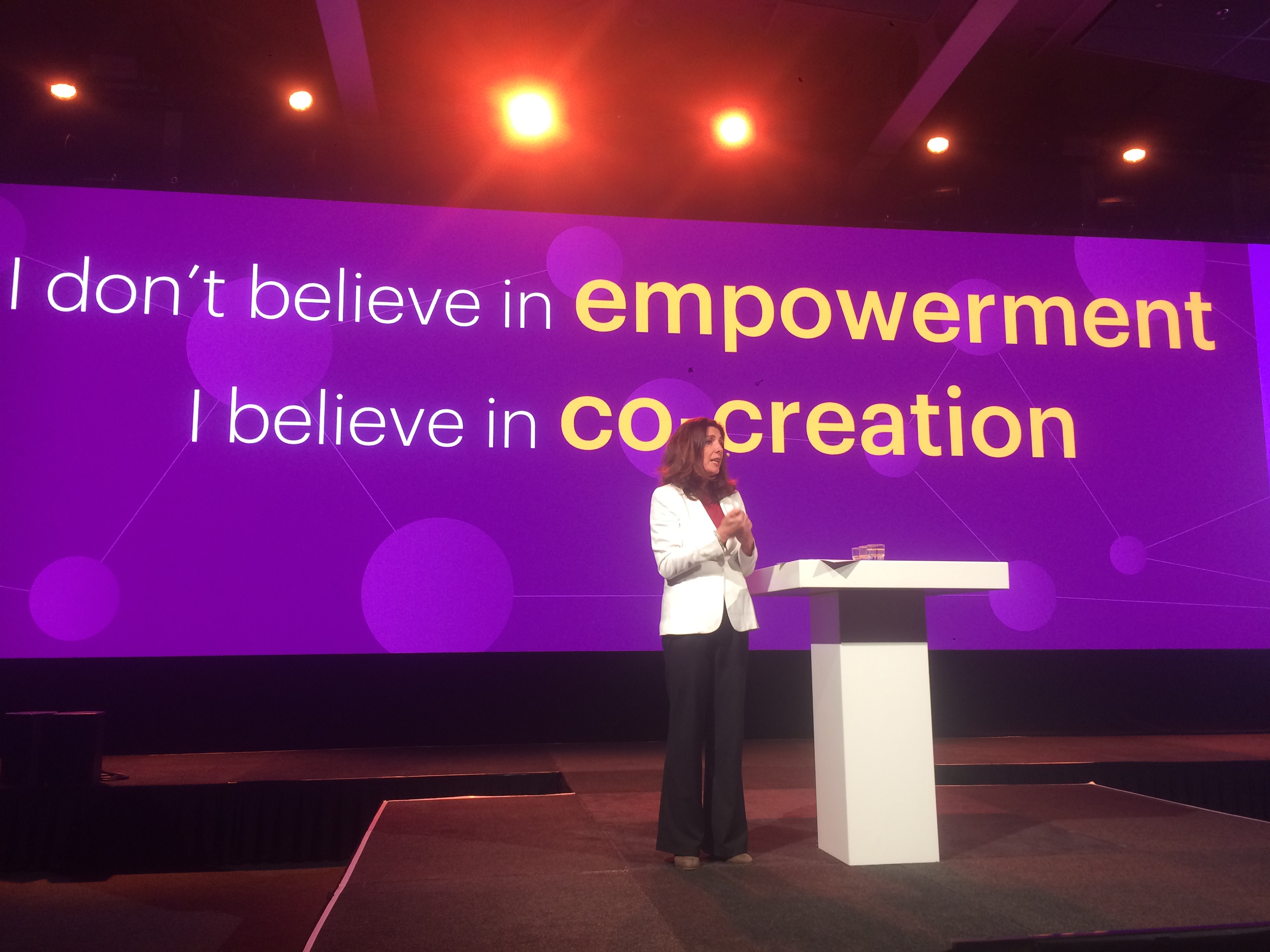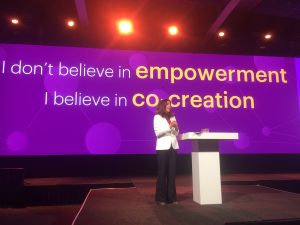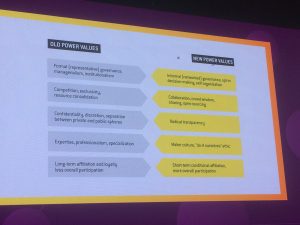IFC – The End of Fundraising as we know it

It’s been a month since the IFC 2018 has ended. The danger is always to return to ‘business as usual’. However, more than ever this year indicated the start of a new era. Fundraising will have to change fundamentally. New technologies like blockchain introduce new ways of giving, and new means for supporters to satisfy the ever increasing demand for more transparency, impact and control of their gift. New entrants like social entrepreneurs are offering new ways to support the causes they feel strongly for.
This will change the charity operating model as we know without a doubt change in a truly disruptive way. We will have to change to a new mindset to remain relevant. From a situation where our supporters merely facilitate us to do our work by donating their money to a mindset where we facilitate our supporters to accomplish their goals together with us. On their own terms. Fundraising departments will need to focus on more than just raising money to accomplish our mission. They need a more holistic view of their organisation. It will be about the most effective ways to engage supporters to reach our goal. A person’s network, time or knowledge may be much more valuable to us in reaching optimal impact than his or her financial support.

At the IFC three messages stood out this year that underline that view, all part of the IFC 2018 theme: Together we Can. To fulfill our mission in the most effective way we need to investigate ways to:
Co-create
Together with your beneficiaries. Involve them, in more than just storytelling. Make them part of the solution. Use their resilience, experience, drive and knowledge to accomplish your mission. One of Esther Dingemans’ quotes (DRC) during the Closing Plenary: “I Don’t believe in Empowerment. I believe in Co-creation.”
Crowdsource
Together with your current supporters, but also with new types of supporters who are eager to support us in other ways. Give them the opportunity to support you in the way they want to support you. Let them donate their network, their time, knowledge. People will engage with us much more, and contribute more effectively to our mission, by (also) sharing their creativity, knowledge or network. Build a movement instead of a donor base. It will strengthen their commitment to your organisation.
Cooperate
Together with your internal departments. It’s been said year after year: get rid of the silos! This year, most of the successful campaigns presented were exactly that: a successful cooperation between the different departments of your organisation, with one common goal in mind. A goal that doesn’t necessarily has to be more money, but: more impact! The RNLI example during the IFC IWITOT (I Wish I Thought of That) session illustrated that perfectly. One weekend, the common goal was: No more people will die due to drowning. Lifesavers and fundraisers worked side by side. The fundraisers’ only job that weekend: to educate people. No fundraising whatsoever. They reached that goal that weekend. And as an unexpected bonus raised more money that weekend than ever before.
In fact, these three themes are intertwined. You won’t be able to offer your supporters other ways to support your organisation, to fully appreciate the value of other types of contribution, if you don’t work together with each and every department of your organisation. If you don’t have a clear view of what other types of support might contribute to your mission. Other types of support that might even contribute more than a supporter’s financial contribution.
Fundraising will change fundamentally? Here’s the Why
Donor Loyalty has become a major challenge. Why? People want to feel engaged. To feel part of the solution. Next to that, they are asked for money from a growing diverse set of entities. Involving their relatives, friends, etc. They are reaching out for other ways to support the charity of their choice. Run a marathon, do volunteer work, start their own charity. A fundraising model where we primarily ask for money, and our donors merely transfer that money on a regular basis will no longer do.
A diverse set of new technologies are becoming available to further engage our supporters. Think about Virtual and Augmented Reality, Chatbots, Voice Recognition and Internet of Things. To make optimal use of these techniques, we need to cooperate much more closely internally. To be able use these techniques to the fullest extent to inspire our donors with the work we are doing, and the ways they can contribute. Furthermore, the possibilities and these techniques have to offer are developing rapidly. There’s absolutely no way we will be able to have all the necessary knowledge, creativity and experience within our organisation. More than ever, we are in an era where we need to cooperate with the crowd to come up with new and exciting ways to engage our supporters. Where the mere fact that we are cooperating with them is already an excellent first step.
More than any other upcoming technology, the Blockchain technology (or a future improvement) represents needs that will dramatically change the way we operate. As the ‘middle man’ is disappearing in many sectors, the same will eventually happen for many nonprofits. A model where we raise funds primarily to allocate it to research, development projects or individuals in need, will become obsolete. The blockchain and its smart contracts will take care of that on a donor’s individual terms and needs for control and transparency. However, as nonprofits, we have so much more to add to the equation than merely being that middle men. We have the means and the power make that individual part of bigger and more effective movement, where we can add our own knowledge, network and experience to the larger equation.
Impact. In the end, we all exist to make this world a better place. Not to raise as much money as possible. But, to have as much impact as possible on the specific goals we are working for. We NEED more than just money to reach our goals in the most effective ways. Pieta House’s Brian Higgins stated it perfectly during his presentation. After people have donated they not only get a sincere ‘Thank you’. They are also asked to extend their support to do more. “Your money has contributed to the solution, now please also help us to fight the cause: loneliness.” An additional ask to a donor that would have been unthinkable several years ago. However, this approach without a doubt will only strengthen the donor’s loyalty, instead of decreasing it.
The IFC Opening Plenary illustrated this new way of thinking by focusing on the models of the New Power versus the Old Power values. As fundraisers, we will be working with a new generation with other needs. It is time to draw a new generation of activists. It is time to rethink our way of fundraising.

Together we can – even more
Personally, I would like to add one more form of working together. Open Innovation. Innovate together with other interested parties: start-ups, universities, corporates, your suppliers. And, last but not least, cooperate with other charities. In the UK, the Goodlab initiative is a great example of joining forces. In the Netherlands, we have recently started investigating the ways we can explore test applications offering the benefits of the blockchain technology in a cooperative manner with a large number of interested charities. First discussions have turned out to be very fruitful, all charities involved feel the need to share knowledge, experiences and even development costs. Together we can. In more ways than we can imagine right now.
4 Comments
ann.kiare@soscvkenya.org · November 20, 2018 at 16:09
Subscribe me
ann.kiare@soscvkenya.org · November 20, 2018 at 16:10
Subscribe Ann Kiarie
Nathalie · December 3, 2018 at 11:42
Please subscribe me. Thanks
Luibow Koss · February 14, 2019 at 08:31
OK, for a new person as I am, what could it mean? As I’ve understood it, I can represent a classic example for your benevolent work. I need HELP! To publish e-book of childrenverses/translationed verses/fairy tales! Lack of pc skills, confidence & money! AND: may I be subscribed? Thanks a lot!!!